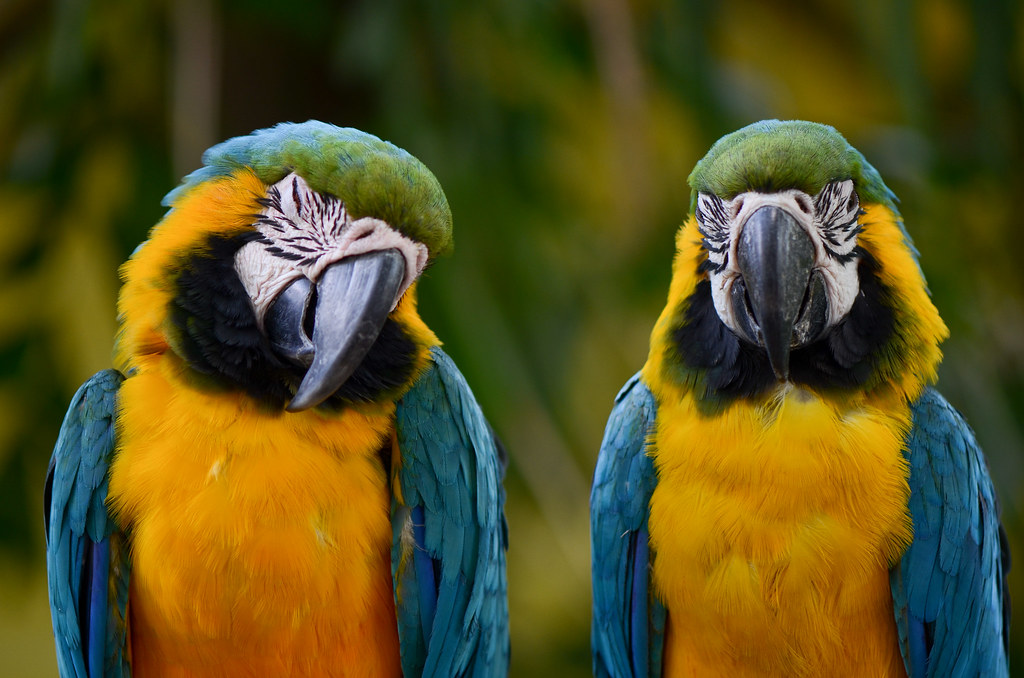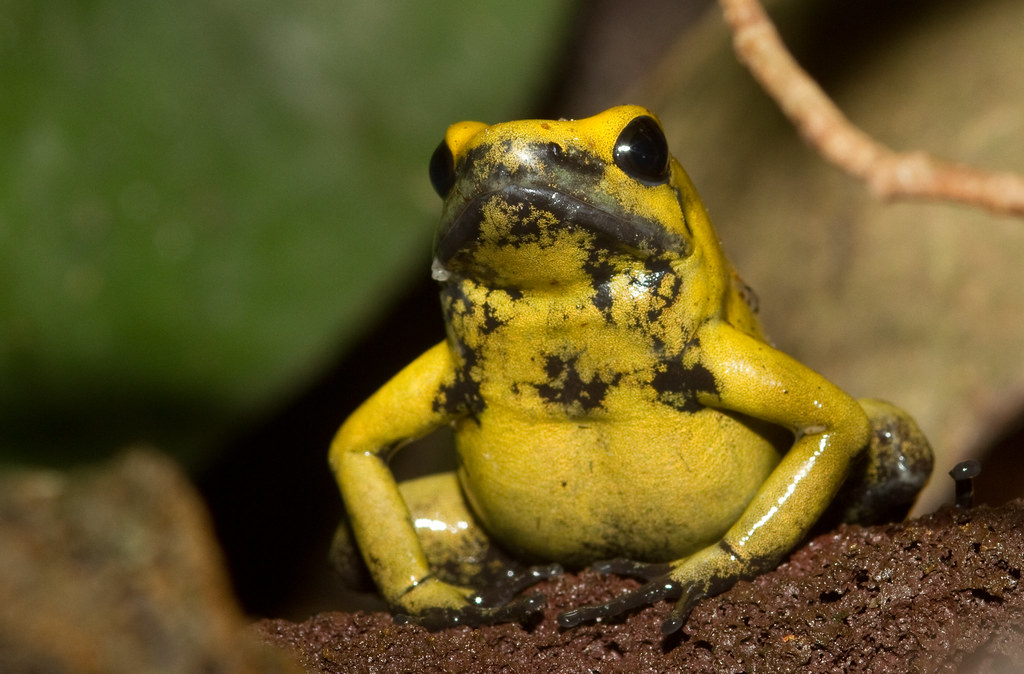
Colombia, as one of the few megadiverse countries in the world, is extremely vulnerable to wildlife trafficking. This global illegal industry, estimated by Interpol to generate over 20 billion dollars annually, is rapidly expanding, driven by increasing demand in Asian, European, and North American markets.
In Colombia, wildlife trafficking is the third largest illegal industry after drug and human trafficking. Interestingly, wildlife trafficking in Colombia takes several forms, as the country’s fauna is not only victimized by poaching and illegal trade but is also threatened by local customs and traditions, as well as the introduction of new species that endanger it.
Colombia, a megadiverse country
Colombia is one of the 17 megadiverse countries in the world and ranks as the second most biodiverse country, hosting over 67,000 animal and plant species, which account for approximately 10 percent of the world’s species. Renowned for its flowers and plants, such as orchids, Colombia also boasts an extraordinary array of fauna. It is home to nearly 2,000 bird species, including 160 hummingbird species—the highest number globally—as well as the second-highest number of amphibians and reptiles and the fifth-highest number of mammal species, with 548 species, including 63 that are endemic.
However, this abundant ecosystem is simultaneously extremely fragile and vulnerable. According to the Colombian Ministry of Environment, 1,203 species are threatened, including 407 animal species. The threats to Colombian wildlife are numerous. Deforestation and the expansion of agricultural land, for example, pose major threats to species such as the spectacled bear. But above all, it is illegal hunting and poaching that jeopardize Colombian wildlife.
Wildlife trafficking in Colombia
According to official figures, the Colombian Police rescued 28,025 animal specimens from wildlife trafficking in 2023, including 7,536 birds, 4,457 mammals, and 16,032 amphibians and reptiles. These considerable figures represent only the tip of the iceberg of this significant traffic that devastates Colombian fauna and endangers hundreds of species.
Among the most trafficked species in Colombia are birds, many of which are destined for the U.S. market. Parrots like the orange-chinned parakeet and scarlet macaw, as well as toucans, are among the most sought-after species.

Among reptiles, turtles are one of the species most severely impacted by wildlife trafficking; the hicotea turtle, mata mata turtle, and hawksbill turtle are particularly coveted, mostly for their shells but also for their eggs and meat. Additionally, black caimans are highly valued for their alleged medicinal properties or as trophies, while poaching of pythons from the Amazon region is driven by demand in the Chinese market.
Among amphibians, the poison dart frogs, especially the golden poison frog, are particularly endangered. Indeed, its status as the most poisonous species on earth makes it especially attractive to collectors.
Regarding mammals, monkeys are among the most vulnerable species. The white-footed tamarin, night monkeys, and cotton-top tamarin are prime targets for poachers, as they can be sold as highly valuable pets on illegal markets. Other animals that are victims of wildlife trafficking include the oncilla, jaguars, sloths, and the Caribbean manatee.

Colombia against trafficking
In recent years, Colombian authorities have intensified their efforts and initiatives to crack down on poaching and wildlife trafficking in the country. In April 2022, demonstrating its commitment to addressing this issue, Colombia became the first country in the world to sign the United for Wildlife’s Buckingham Palace Declaration, a global initiative launched by British Prince William against the illegal wildlife trade.
In Colombia, wildlife trafficking is punishable by hefty fines and imprisonment ranging from 5 to 11 years. In 2023, nearly 62 people were convicted for wildlife trafficking and poaching, as the Colombian Police have significantly increased their efforts against traffickers. For instance, earlier this year, an illegal network dealing in the sale of shark carcasses was dismantled, with nearly 2.5 tons seized in the port of Buenaventura.
However, the lack of resources and state control prevents the effective containment of the phenomenon, particularly in remote areas such as the Amazon. The porous nature of the border areas with Brazil and Peru makes them particularly appealing as transit routes for traffickers of rare birds and fish.
Colombian culinary traditions
The international market is not the only driver behind wildlife trafficking in Colombia. Indeed, Colombians themselves are fueling the illegal market, as some animal species are part of very old and traditional culinary practices. It is estimated that over 150 species of reptiles, insects, amphibians, birds, and mammals are at the heart of these special traditions, especially among indigenous and Afro-descendent communities.

The Caribbean Coast is a major hotspot for local wildlife trafficking. There, the capybara is a highly prized and sought-after dish, considered typical during the Holy Week period, as are iguanas, whose hearts are particularly valued, and white caimans. Just before Holy Week, during Lent, turtles are consumed, particularly the hicotea turtles, a threatened species. These practices are also widespread elsewhere in the country, where armadillos and capybaras are very popular dishes as well.
Although often illegal, such practices are deeply entrenched in local customs and traditions, often inherited from past centuries, making it difficult to put a stop to them.
Colombia as a wildlife import country
Colombia’s biodiversity is not only threatened by wildlife trafficking networks that satisfy both national and international demands but also by the domestic demand for exotic animals. Recently, there have been multiple cases in Colombia where exotic animals were inadvertently released into the wild, often due to abandonment or negligence by their owners. Exotic species such as Fischer’s lovebirds from Africa, Indian pythons, North American corn snakes, and even African pygmy hedgehogs have been discovered across Colombia.
Even in limited numbers, these alien species can have catastrophic impacts on local fauna and flora, disrupting ecosystems and delicate natural balances. One of the most iconic examples is the infamous hippos of Pablo Escobar. The Medellin Cartel leader imported two pairs of hippos to his Hacienda Napoles in the 1970s. After his demise, the hippos were set free into the wild, where they flourished, reaching a population now estimated at about 200. They have since become a considerable concern for local authorities, posing dangers to both humans and local wildlife.
See all the latest news from Colombia and the world at ColombiaOne.com. Contact our newsroom to report an update or send your story, photos and videos. Follow Colombia One on Google News, Facebook, Instagram, and subscribe here to our newsletter.

